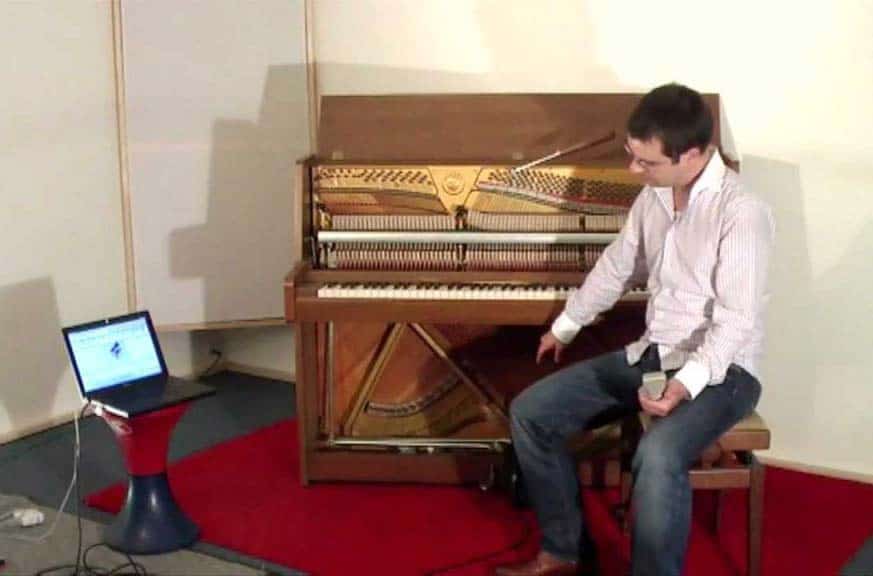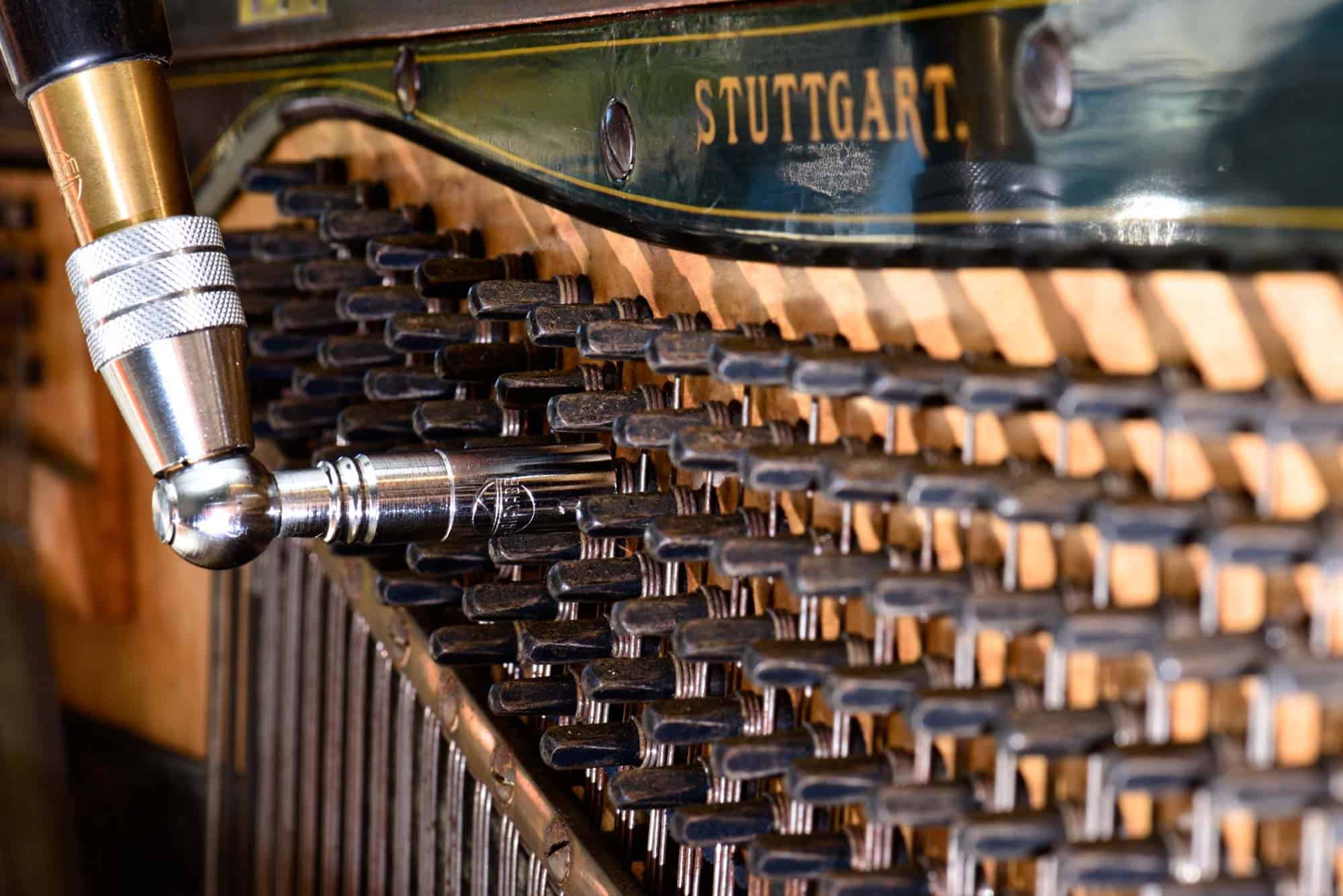Professional Piano Repairs and Tuning
Over 30 years experience, servicing pianos - Christchurch to Oamaru, including Queenstown areas.
Need piano repairs and tuning? Brian can help!
Brian James is based in Christchurch/Timaru and services most of the South Island.
He is a talented pianist with more than 30 years experience as a fully qualified master craftsman, piano tuner, antique piano restorer and piano removalist.
He has worked alongside some of the best European, Australian and New Zealand professional piano technicians since he was in his teens.
Brian specialises in Antique Piano restorations, with decades of experience in French Polishing, wood veneering, etc. Brian knows how to get the best from your piano, whether it is an old heirloom upright or a concert grand.
Also, Brian and his team are professional removalists, grands, uprights, stairs and steps are no problem. Call them for a quote.
Piano repairs and tuning
Brian offers a full piano tuning service from $160, including minor repairs. (A small travel fee may apply)
Call, text or email Brian for bookings, no obligation quotes and free advice on 021 038 9496 or loomesytunes@gmail.com.
One in a zillion
"Brian is one in a zillion and I would not hesitate to call him ‘The Piano Whisperer’."
- Claire Buchholz

Goes the extra mile
"Brian truly stands out for giving the most professionally sound service. I have recommended him to all my students."
- Wendy Siebeneicher

Not just Piano Tuning!
- White/Black Keytop replacements, ivory included.
- Pitch Raising (Brian’s Speciality)
- Regulation, action and pedal repairs
- Piano Restorations
- Piano Removals
- Piano Repairs (Minor repairs usually included with tuning)
Common questions about Piano Repairs and Tuning
The frequency of tuning depends in part on the severity of the climate, the age and condition of the piano, and the extent to which it is used. In any case, pianos should be tuned once or twice a year to keep the pitch level from dropping below A=440.
New instruments should be tuned three or four times a year during each of the first two years because the new strings will continue to stretch during that period. For instruments in-home use, one or two tunings a year are usually adequate to keep a piano at concert pitch.
Keep to 440Hz. This is important if you want to learn the piano from a Cd, DVD or YOUTube etc. Also important if you want to play alongside other instruments.
In nearly all cases, yes! I am passionate about pitch-raising and enjoy the challenge. It is physically demanding as there are approx. 220-250 tuning pins in a piano, and each must be adjusted several times.
You may have been advised against having your piano tuned to concert pitch. This could be because of the physical requirement mentioned above, but there are also the risks of strings breaking, or the iron frame actually cracking due to the unfamiliar tension being applied. The average size upright frame holds approx. 16 ton of combined string pull pressure at concert pitch. However, I have spent over 30 years perfecting a method for best preventing these possibilities, and have hardly ever experienced a problem.
Ivory Key-tops
Antique pianos which still have original ivory key-tops in good condition are rare and precious creations. If your piano has ivories you must look after them! Ivory is porous and can stain easily, like teeth, but discolouration can usually be whitened using one soft, dry cloth to clean and another to polish, using Jif sparingly -this is so you don’t get any visible runs down the sides of the keys. If further whitening is desired, sanding and/or bleaching the ivory can be the answer. It is best done by a professional.
Teach children not to bash or flick up ivory key-tops. Over the years I have collected a large number of ivories to use as replacement parts, but there is no standard sized length, width, thickness or colour across the many different brands and models of antique pianos.
If you have an ivory key-top come off without splitting or snapping KEEP IT, and don’t be tempted to glue it back on with superglue. Call me for further advice.
Ivory key-tops benefit from natural UV light (not direct sunlight), which helps them to stay nice and white. Keeping the fall (keys cover) of a piano closed for long periods contributes to the discolouration of ivories.
Finally, keep your ivory key-tops clean. If you discover a sticky residue on them simply clean as mentioned above.
Piano Casework
Keeping high-gloss pianos (especially modern black) in sparkling show-room condition is very difficult as they readily show dust and fingermarks. I recommend using a synthetic polish over sprays such as Pledge, which will cause a cloudy residue over time. Talk to Brian for advice.
For pianos that really need a good clean first I use a Carnauba wax/cutter (the same as used for your car). For extra grimy pianos use Extra Cut followed by the synthetic polish to polish out the swirl-marks left by the cutting.
Low-sheen older pianos can be treated to the same cleaning process, however, may not need the synthetic polish but rather a furniture teak oil to finish an old natural wood grain piano.
Ensure that day-to-day dusting of any piano is done with a duster or soft dry cloth only.
Never place flower vases or any other wet objects on a piano. Even if water doesn’t spill directly onto the piano, a watermark will develop in the wood/polish over time.
Grand piano soundboard
I recommend that the grand piano lid is lowered and closed when not in use. Although the grand piano with its lid up looks impressive, the dust that accumulates on the soundboard (the polished wooden board under the strings) looks bad and will eventually need to be professionally cleaned.
Piano castors
In nearly all cases I recommend that castor cups be used. These prevent unseen corrosion marks on carpet and stop any sharp edges of the castors slicing through. The rubber kind are better than plastic for uprights as the plastic ones are lightweight and can snap. Grand pianos should have the plate type cups, which distribute the piano’s weight over a larger floor area.
My piano has a buzz/unwanted vibration!?!
Sometimes a piano can develop a buzzing distorted sound on certain notes or chords. Often the problem is not the piano but something in the room reacting to certain frequencies the piano produces. Try to hear where the buzz is coming from –a task made easier with two people, one to play, another to listen and search. With upright pianos check nothing has fallen down the back of the piano and is touching the soundboard. Also, open the bottom panel (beneath the keyboard) and check for unwanted items on the floor of the piano. With grand pianos check that nothing has fallen through the piano and is resting on the soundboard. If not, check pictures on the walls, metal objects nearby, loose parts/screws on the piano etc. If the cause of the vibration remains a mystery then there may be a structural problem in need of repair.
Eek, my pedals squeak!?!
With an upright piano, remove the bottom panel (beneath the keyboard) and lube all metal-on-metal pedal parts with WD-40 or Vaseline. For grand pianos, lube the vertical pedal rods underneath the piano and look for any worn felt or rubber that has gone hard or is producing a metal-on-metal situation. These are the most common causes of squeaks, but if the noise continues, the problem may be in the action (piano workings), requiring professional help.
To clean a piano case it is best to remove dust with a feather duster. A bit of moisture from the breath, used in conjunction with a soft leather chamois skin can be used to remove stubborn smudges, although it is usually best to consult the manufacturer’s instructions for maintaining the finish.